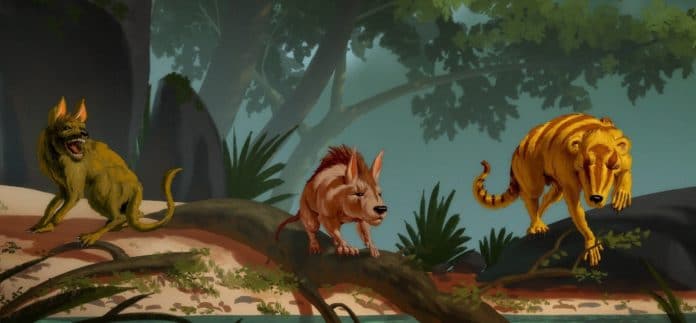Paleontologists at CU Boulder have discovered three new fossil mammal species that were the ancestors of today’s hoofed animals, such as cattle, horses, deer, and moose—but much smaller. Analysis shows that these species lived within a few hundred thousand years after the mass extinction event.
Paleontologists discovered these species at the site of an ancient riverbed in southern Wyoming. This discovery shows what western North America looked like after the dinosaur extinction.
To fill the gaps, scientists dug into a collection of condylarth fossils, mostly pieces of jawbones and teeth, that they collected from Wyoming’s Great Divide Basin in the 2000s. Today, the site is a dry and scrubby patch of land not far from the town of Rawlins.
Scientists examined the fossilized teeth and jaws of mammals. They found that the species belongs to the category of primitive ungulates informally called “Condylarths.” Early Condylarth is believed to be the size of a housecat. These species are lived within the first 328,000 or so years after the dinosaurs disappeared, a time known as the early Puercan age.
Condylarths were the most abundant group of mammals in North America. Based on the shape of their teeth, the three new species may have been omnivores that ate both meat and plants.
Scientists named the owner of these inflated molars Beornus honeyi- a nod to Beorn from J.R.R. Tolkein’s The Hobbit, a character who is sometimes “a great strong man” and sometimes “a huge black bear.”
Scientists also found two other new species from the same region- Miniconus Jeannine and Conacodon Hettinger. All these three species belong to the family Periptychidae.
Jaelyn Eberle, a curator of fossil vertebrates at the CU Museum of Natural History and a professor of geological sciences, said, “Many paleontologists have assumed that, during the early Puercan, much of the West was home to the same handful of common mammal species, all the size of rodents. But the new fossil finds suggest that mammals may have begun to spread around the region, developing larger and more specialized body types, earlier than researchers suspected.”
“Looking at the first few geologic minutes of the Puercan is key to understanding the evolution of mammals over the millions of years that followed, including the origin of today’s orders of mammals.”
Journal Reference:
- Madelaine R. Atteberry and Jaelyn J. Eberle. New earliest Paleocene (Puercan) periptychid ”condylarths” from the Great Divide Basin, Wyoming, USA. DOI: 10.1080/14772019.2021.1924301
